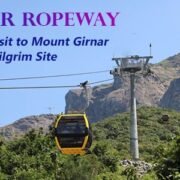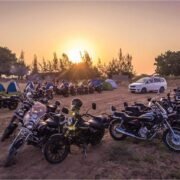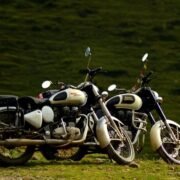
Khardung La Pass (Highest motorable road in the world)
Khardung La,is a dream destinationfor the motor vehicle enthusiast all over the world; situated at a towering height of 18380 ft is considered as the highest motorable pass in the world but statistically, it is not.
Yes, the world’s highest motorable pass isn’t the Khardung La 5,359 m (17,582 ft) but Dungri La (Mana Pass) 5,610 m (18,406 feet). As indicated by Wikipedia, vehicles have been rolled over the 5,582 meters (18,314 ft) Marsimik La, in the Indian Karakoram toward the north-east of Khardung La. The pass is motorable by gifted bikers and Indian Army jeeps however it is far from being obviously true whether this pass ought to be thought to be motorable.
It is a mountain pass in the Ladakh region of Jammu and Kashmir State of India.
The pass is the gateway to the Shyok & Nubra valleys and lies in the north of Ladakh range of Himalayas. The mountain pass holds a special significance as it is the way to carry supplies to the Siachen Glacier. It offers astonishing views of the twisting roads up the mountain and the awesome valley. The Siachen Glacier lies partway up the latter valley. Built in 1976, it was opened to public motor vehicles in 1988 and has since seen become the dream destination of adventure motorbiking and SUV expeditions. Maintained by the Border Roads Organisation, the pass is strategically important to India as it is used to carry supplies to the Siachen Glacier.
Alternatively known as the ‘Pass of Lower Castle’, Khardung La is the inspiration of motorbike, automobile and mountain biking expeditions. This makes it adventure aficionados’ paradise indeed. A visit to Khardung La is one of the must things to do in Ladakh. The picturesque panoramas and pure air lure tourists from every nook and corner of the world.
Khardung La is historically important as it lies on the major caravan route from Leh to Kashgar in Central Asia. About 10,000 horses and camels used to take the route annually, and a small population of Bactrian camels can still be seen at Hunder, in the area north of the pass. During World War II there was an attempt to transfer war material to China through this route.
Khardung La Weather
The temperatures keep on changing at the top of the pass due to high altitude. The Average temperature in Khardungla during summer reaches up to 20 degree Celsius while in winter it can go as low as -40 degrees. The pass gets wrapped up by a 10 feet snow during snowfall. Altitude sickness is a serious health concern for travellers not previously used to high altitudes. So it is necessary to get acclimatize in Leh for a day or 2 before travelling to Khardung La and beyond.
Connection to Khardung La
The nearest sizable town is Leh. Leh is connected by road from Manali and Srinagar, and daily flights are operated from Delhi. From Leh, a daily bus service to Nubra Valley passes over Khardungla which may also be reached by a hired car with an experienced driver or by bike. The two bases on either side of Khardong La are North Pullu and South Pullu. There are four stops from Leh to Khardung La. These are Leh – Phyang – South Pullu – Khardung La.
[Road Leading to Khardung La]
[Road Blockage at Khardung La]
Inner Line Permits (ILP)
An Inner Line Permit (ILP) which can be acquired at the DC’s office in Leh is required for tourists (not needed for Jammu and Kashmir citizens). Travellers’ are required to check in en route and must provide photocopies of the permits to be deposited at each checkpoint.
[South Pullu Checkpost]
Things to keep in mind while travelling to Khardung La
Travelling to Khardung La and taking pictures at famous signboards is a lifetime experience, but few things must be kept in mind while travelling to Khardung La:
- Basic Medical Kit.
- Keep your permits along with you.
- Alternatives to oxygen like camphor must be carried.
- Check your vehicle thoroughly before commencing your journey.
- Extra batteries may come in handy.
- Carry a camera to click lifetime memories.
- Keep the stock of eatables as you may get stuck for hours due to landslides.
- Carry an extra layer of woollen clothes as it can get very cold on top.
- Carry a portable oxygen cylinder.
- Drink lots of water while climbing to the top.
- Do not stay at the top for more than 10-15 minutes as it may lead to AMS.



